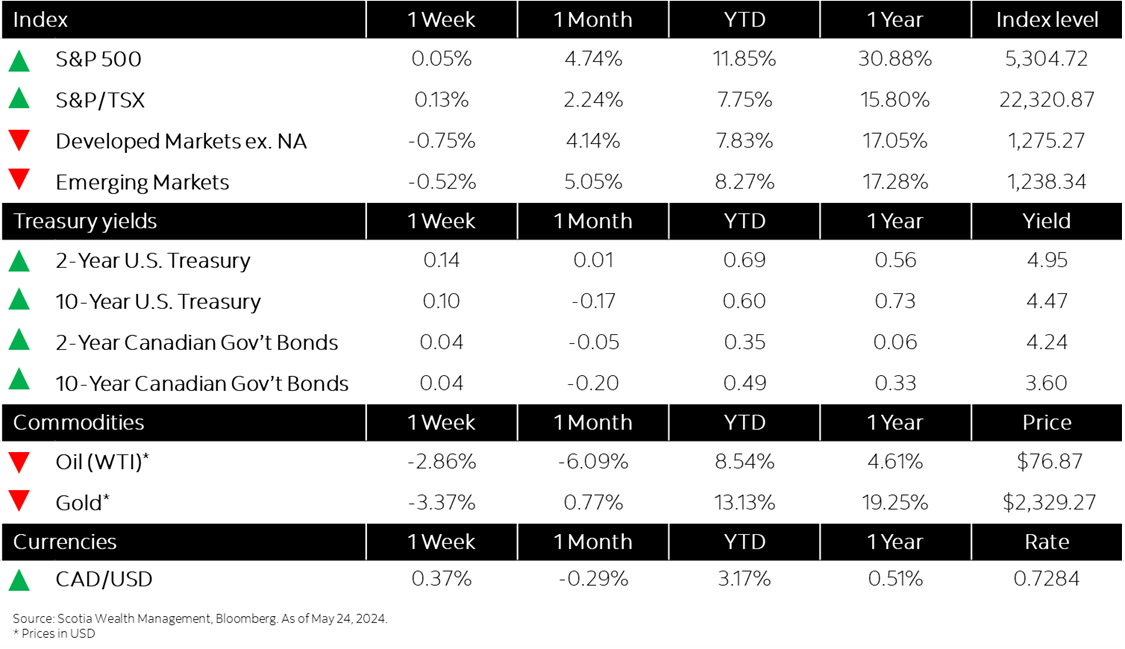
Market Watch: May 24
This week’s highlights
- North American markets close higher despite late-week correction
- Economic acceleration pushes bonds to give up recent gains
- Inflation in Canada cools to 2.7% in April, increasing odds of a summer interest rate cut
- U.S. home sales fall again in April after high mortgage rates dampen activity
- China benchmark lending rates held steady
- In the news: Anglo American, BHP extend talks following third rejected bid
Week in review
North American markets close higher despite late-week correction



